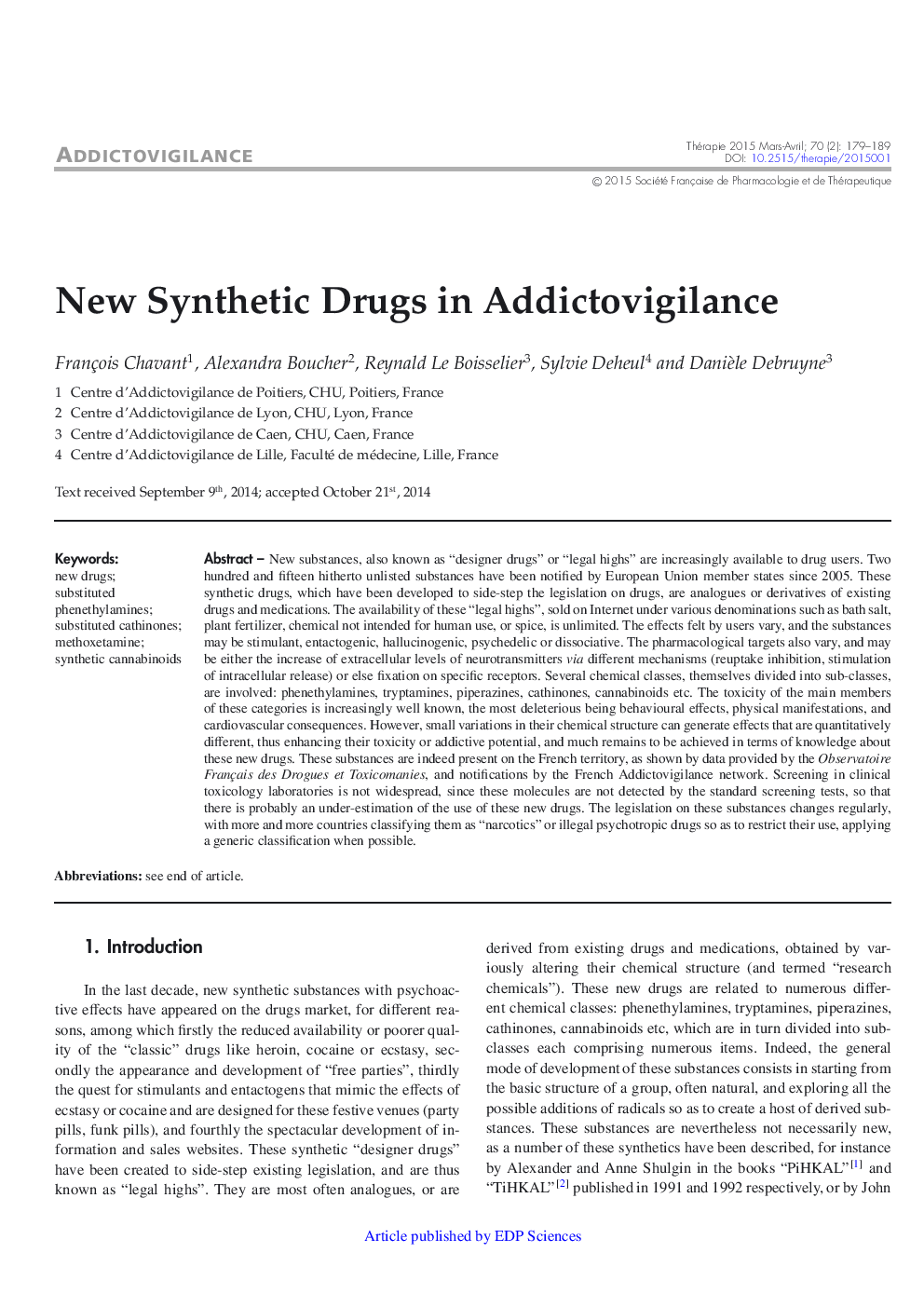| Article ID | Journal | Published Year | Pages | File Type |
|---|---|---|---|---|
| 2578742 | Thérapie | 2015 | 11 Pages |
Abstract
New substances, also known as "designer drugs" or "legal highs" are increasingly available to drug users. Two hundred and fifteen hitherto unlisted substances have been notified by European Union member states since 2005. These synthetic drugs, which have been developed to side-step the legislation on drugs, are analogues or derivatives of existing drugs and medications. The availability of these "legal highs", sold on Internet under various denominations such as bath salt, plant fertilizer, chemical not intended for human use, or spice, is unlimited. The effects felt by users vary, and the substances may be stimulant, entactogenic, hallucinogenic, psychedelic or dissociative. The pharmacological targets also vary, and may be either the increase of extracellular levels of neurotransmitters via different mechanisms (reuptake inhibition, stimulation of intracellular release) or else fixation on specific receptors. Several chemical classes, themselves divided into sub-classes, are involved: phenethylamines, tryptamines, piperazines, cathinones, cannabinoids etc. The toxicity of the main members of these categories is increasingly well known, the most deleterious being behavioural effects, physical manifestations, and cardiovascular consequences. However, small variations in their chemical structure can generate effects that are quantitatively different, thus enhancing their toxicity or addictive potential, and much remains to be achieved in terms of knowledge about these new drugs. These substances are indeed present on the French territory, as shown by data provided by the Observatoire Français des Drogues et Toxicomanies, and notifications by the French Addictovigilance network. Screening in clinical toxicology laboratories is not widespread, since these molecules are not detected by the standard screening tests, so that there is probably an under-estimation of the use of these new drugs. The legislation on these substances changes regularly, with more and more countries classifying them as "narcotics" or illegal psychotropic drugs so as to restrict their use, applying a generic classification when possible.
Keywords
MDEAMXEMMAI3,4-méthylènedioxy-N-éthylamphétamineEMCDDA4-MAMBDB2C-B4-FAMDMACB1SCsInNLSDTHCSynthetic cannabinoidsmethylenedioxymethamphetamineΔ9-TetrahydrocannabinolLysergic acidNew drugsCNSWorld Health Organizationcentral nervous systemMethoxetamineEuropean Monitoring Centre for Drugs and Drug AddictionWHO
Related Topics
Health Sciences
Pharmacology, Toxicology and Pharmaceutical Science
Pharmacology, Toxicology and Pharmaceutics (General)
Authors
François Chavant, Alexandra Boucher, Reynald Le Boisselier, Sylvie Deheul, Danièle Debruyne,
